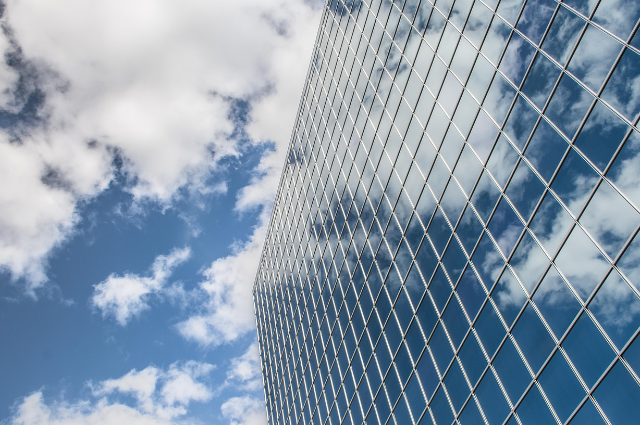
The World Behind the Curtain
Every day, we move through unseen frameworks that shape the way we live. Cities, offices, houses, social norms - they are all architecture, silently directing our thoughts, motions and associations. Social norms can influence behaviour, as seen in Tokyo, where people queue precisely at subway doors. It is a practice developed over the years, and no one enforces it, proving the power of social norms.
Studies in environmental psychology show that the layout of public spaces directly influences social behaviour and stress levels (Evans & McCoy, 1998). These structures are nearly invisible to us, but they introduce form and order in our lives and form rhythms according to which we act. These are those unseen constructs that are reassuring as well as restrictive and define how we behave as well as how we see the world. To be aware of them is to become conscious; to be able to see them is to regain choice.
Rituals and Routines: The Silent Frames of Life
Much of our life is structured by habits and routines. Even the everyday things, such as morning coffee, commuting, and daily routines provide a framework of stability. Consider Steve Jobs’ daily walking meetings, which allowed him to think creatively within a structured routine.
According to a study in the European Journal of Social Psychology (Verplanken & Wood, 2006), over 40% of daily behaviours are automatic routines, largely outside conscious awareness. Routines also control energy and structure time, and give solace in repetition. However, they may restrict spontaneity and creativity when adhered to blindly. Life becomes predictable. Although predictability is reassuring, it can also narrow our perspective. Awareness of our routines allows us to consciously choose how to navigate our days rather than being carried along by them.
Rules We Follow Without Knowing
The social norms are unspoken rules that govern human behaviour. These rules are followed subconsciously by us, not only by the way of acting in open places, but also by the rules of professional establishment. One such example is how people will subconsciously turn to face forward and maintain a silent nonverbal social code that everyone abides by in the elevator.
Research in social psychology shows that individuals conform to perceived social norms even when they conflict with personal preferences (Cialdini & Goldstein, 2004). These regulations bring sanity and minimise resistance, but they may also limit individuality when mindlessly followed. It is the knowledge of these invisible rules that gives us the freedom to act intentionally. By noticing what guides our interactions, we can begin to navigate life with awareness rather than habit.
Spaces That Shape Us: Cities, Homes, and Streets
Space has great power over how we behave and think. The city form, the central place, the roadways and interiors all contribute to the way we think, move around and feel subtly. Broad roads promote relaxation, while narrow, compact streets promote tension.
In Barcelona, social places within the city centre would encourage social interaction and community actions, whilst in the suburbs, cul-de-sacs tend to isolate the residents, steering them into lifestyle and interaction directions. A 2016 article in the Journal of Environmental Psychology discovered that urban design has a considerable influence on social and mental wellness and on social interactions. Architecture is not something utilitarian; it is a silent educator and defines how we live in the world.
Breaking Free: Seeing the Structures We Live In
Recognising the invisible architecture around us allows for conscious choice. Having known how routines, social norms and places influence behaviour, we are able to bend them to our will instead of obeying them unconsciously. It takes little things, like taking a new road, rearranging the world, and challenging the social norms, to open up freedom and creativity.
Companies like Google and Pixar intentionally design open and playful workspaces to foster collaboration, demonstrating how awareness of structure can create opportunity. Research on behavioural interventions suggests that even small changes in physical environment or routine can significantly increase creativity and adaptability (Amabile et al., 2005). Consciousness changes structure into possibility so that we can live more presently.
Awareness as Liberation
The universe is like the clock; it is subtly planned by unseen structures, but with awareness of them, we can act willfully. By understanding the unseen structures that shape our routines, behaviours, and perceptions, we gain clarity and choice. From commuters who adhere to social norms in Japan, and employees who can become productive in designing creative landscapes, because we realise that by acknowledging unseen structures, we make ourselves strong.
Studies in mindfulness and environmental awareness indicate that noticing patterns in daily life improves decision-making, emotional regulation, and personal autonomy (Kabat-Zinn, 2003). Awareness of this architecture is not rebellion; it is liberation. It is the understanding that life is made and something that can be changed, and that we are capable of navigating life consciously, and that we have a choice in how we move through it, making the direction we move in thoughtful, deliberate, and mindful.
Reference
- https://doi.org
- https://doi.org
- https://doi.org
- https://www.sciencedirect.com
- https://hbr.org
- https://doi.org
